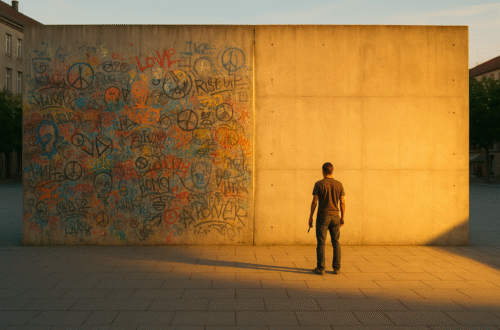There comes, in every life, a moment when one recognises that the bulk of one’s work is done. The shelves are full enough, the seeds have been sown, the letters written (though some remain unsent, lurking reproachfully in drawers), and the laughter echoes faintly down the corridors of memory. It is a strange sensation, this recognition, not grim, but almost tender. It feels as though life itself were whispering, “You may rest your hand now; others will carry the pen.”
Letting go, of course, is not something for which we moderns are well trained. We are rather adept at clinging,clinging to our projects, our possessions, our illusions of indispensability. We imagine, with touching hubris, that the world might unravel without our anxious grip upon it. Yet the truth is far gentler: the world spun merrily along before our arrival, and it will continue its rotation long after our departure. The task is not to secure permanence but to accept impermanence with grace.
One might compare it to tending a garden. We dig, plant, water, and prune, sometimes with more enthusiasm than expertise. But sooner or later, another season arrives, and we must accept that the blossoms are not ours to keep, only ours to tend for a while. The daffodils nod, the roses fade, the leaves fall. And then,here is the marvel,new hands come with new seeds. The garden, in its quiet way, instructs us in the art of continuity through relinquishment.
To let go, then, is not to surrender to despair, but to make space for the new. A full hand cannot receive a gift; a clenched fist cannot offer one. Only the open palm is capable of both releasing and receiving. The art of letting go is, at its heart, the art of trust,trust that the love we have given will ripple outward in ways unseen, trust that the care we have offered will be carried forward, trust that the world does not depend on our control but thrives on our participation.
As I sit at my breakfast nook, surveying the scatter of memory and the uncertain but hopeful horizon of tomorrow, I find myself less preoccupied with permanence and more concerned with presence. Have I been present enough? Have I noticed the light on the table, the sound of rain on the roof, the warmth of conversation, the sheer improbability of existence? If so, then perhaps I have not squandered my days. Perhaps the ledger does not need balancing in neat columns, but simply a note in the margin: “He was here, and he paid attention.”
The art of letting go also involves forgiving oneself for the unfinished and the imperfect. Very few lives tie themselves up in tidy bundles. There are always loose ends: projects left half-done, relationships not as mended as one might wish, books one meant to read, places one meant to visit. But perfection was never the point. Faithfulness, attentiveness, tenderness,these were always the truer goals. And they can be achieved even amidst untidiness.
So let this epilogue be not a full stop, but a semicolon,a pause before the sentence continues in the lives of others. May those who come after find their own ways of loving, laughing, planting, and letting go. And may we, who have had the privilege of being here at all, slip quietly into gratitude, leaving behind not a monument of stone but a trail of kindness, like crumbs for others to follow toward home.
In the end, perhaps the gentle art of letting go is really the gentle art of giving thanks. To bow, to release, to whisper “thank you” as the curtain falls,that, I think, is enough. More than enough.





